Price is often a factor when it comes to choosing web hosting. However, you may be tempted to overlook a poor feature set in order to obtain something within your budget – so doing some research beforehand is paramount. Our Hostinger review will take a look at this budget-maximizing option, and offer the information you’ll need to make an informed decision.
In just over a decade, Hostinger has grown from a small web host to one used by over 29 million people, which is due in part to its WordPress specific plans. On top of that, Hostinger publicly displays its server status, and its uptimes are consistently solid.
It’s no wonder this is an appealing option to so many new website owners.
In this Hostinger review, we’ll look at key elements such as features and performance, to help you decide whether this host is worth your time and money. Let’s get started!
Hostinger review for WordPress: Features

To start with, let’s take a look at some of the plans Hostinger offers. You’ll find a full range of options here, including shared, cloud, virtual private server (VPS), and dedicated plans.
What’s more, you can opt for a WordPress-specific plan, and get additional support options and one-click installation. These plans are low-cost, shared hosting – perfect for a variety of website types. You also have a choice between single, premium, and business plans, although the business plan is recommended if you’re using WooCommerce.
If you’re considering a shared plan to get your site started, Hostinger has you covered. Some of its features include:
- 24/7 WordPress support in 20+ languages
- One-click WordPress installation
- A free domain name
- Enhanced security features, such as daily backups and a free SSL certificate
- Practically unlimited bandwidth
As you can see, Hostinger’s shared WordPress plans come with a solid set of features. For most first-time website owners, you’ll have everything you need. In addition, all of this is offered at an affordable price, which we’ll get to in a minute. First, however, let’s look at the support you’ll get.
Support options
For many users, one of the most important hosting features after price is support. While you’re setting up your website using shared WordPress hosting, you’re bound to have some questions. While the internet is filled with lots of helpful hints and instructional posts, a direct line to answer your specific inquiries is always a boon.
The good news is that Hostinger’s support team is available 24/7in 20+ languages. You can either give them a call or send them a message:
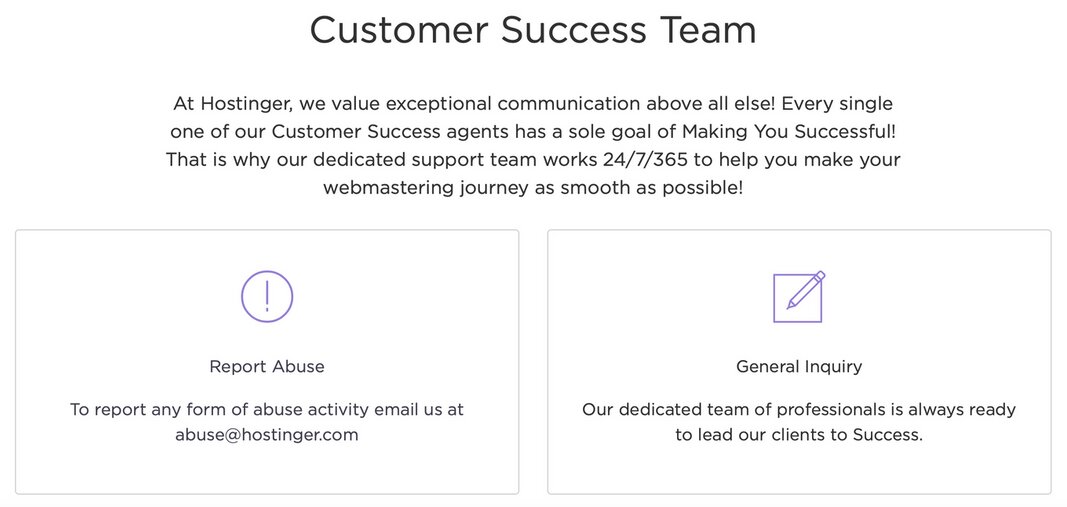
To see how Hostinger would respond, we sent a general inquiry of our own. We received a response in a little over four minutes, which is good but not great:
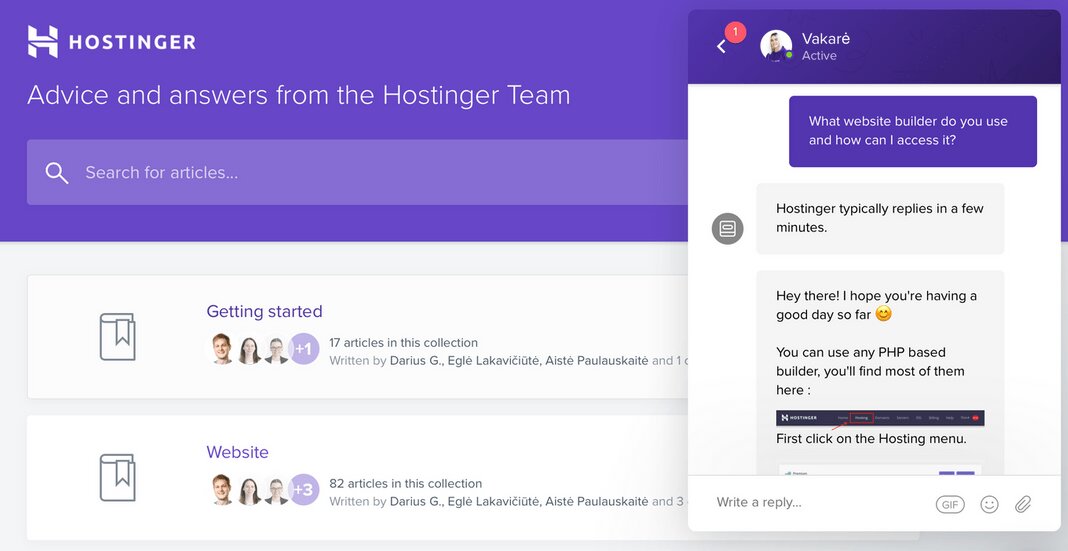
Overall, the support representative we spoke to was friendly and helpful. The chat included useful and actionable information, as well as screenshots for clarification. For any of your general inquiries, Hostinger is easy to contact, and its response times are reasonable.
Performance
Above all else, the sign of a quality web host is how well its servers perform. After all, having a fast website is crucial for providing a positive user experience (UX) to your visitors, and keeping your bounce rate low. Fortunately, Hostinger offers the following performance-specific features:
- Solid State Drive (SSD) hardware
- 99.9% uptime guarantee
- Custom built cache manager
Even better, unlike many other hosting providers, Hostinger offers public information on the performance of its servers. This includes uptime data for the last 24 hours, as well as for the past week and month:
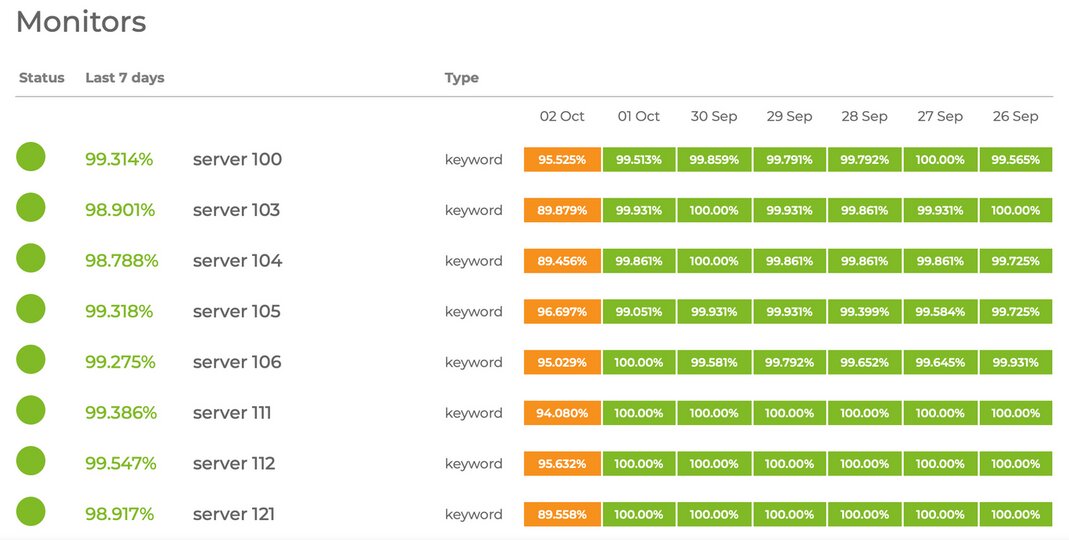
Server uptime depicts the amount of time a server is fully-functional and online. In general, you want to be as close to 100% as possible, as even .1% downtime means ~45 minutes of downtime per month. Above, you can see that Hostinger’s uptime can be a little shaky, which is one of the tradeoffs you’ll make for its cheap prices.
In this case – with the numbers being as low as 99.3% at times – you can experience even 10 minutes of downtime per day. No good.
Page speed tests with Pingdom
Of course, it’s also helpful to get a real-world take on performance. For that, we can use Pingdom to test page speeds and Load Impact to analyze loading times under pressure.
First, let’s do some page speed tests. Pingdom is an effective and popular tool for this, and a basic test is free. To complete our test, we set up a simple website on Hostinger’s servers, loaded with the default theme, a smattering of plugins covering various essential features, and the WordPress Theme Unit Test Data. We then input our site’s URL into Pingdom and ran the test from several different locations.
The following results demonstrate the averages of three tests from each location:
- Washington D.C.: 0.81 seconds
- San Francisco: 1.12 seconds
- London: 0.54 seconds
- Sydney: 2.49 seconds
- Tokyo: 1.57 seconds
Overall, these results are quite good. It’s considered a best practice to keep your page loading times under two seconds. Anything over that can have a negative impact on your bounce rate (how many visitors leave after viewing only one page).
Based on these results, we can see that Hostinger’s servers are performing quite nicely on either side of the United States, and exceptionally well in London. What’s more, both of the other locations we tested are within acceptable limits. From this data, we can conclude that Hostinger is likely to provide serviceable speed in the majority of the English-speaking world.
Page speed tests with Load Impact
Next, let’s see how our site handles traffic. For this, we’re going to need a different tool – Load Impact. This lets you simulate a number of virtual visitors to your website, and is a great way to see if your website can hold up under pressure.
We ran our test site through Load Impact’s tool to see how it would perform:
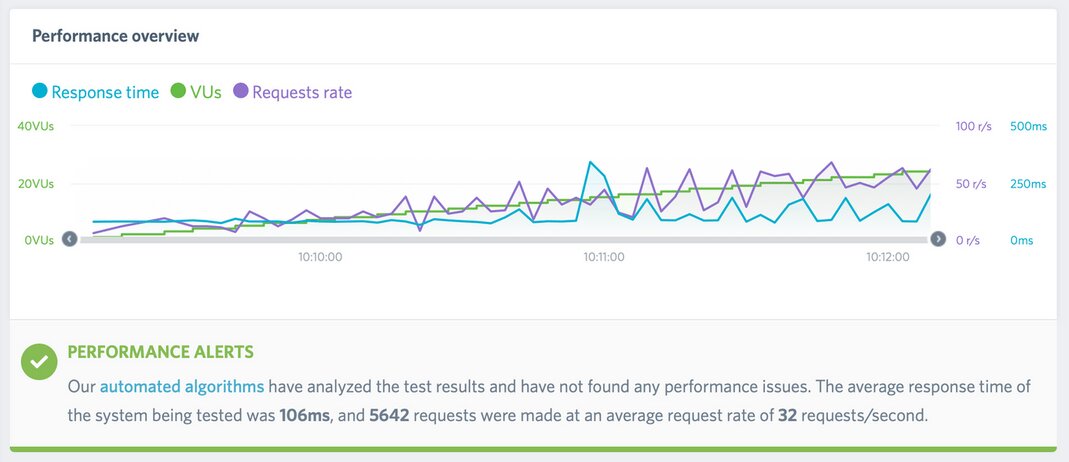
From this test, we can see that loading times were generally solid. The response time (the blue line) did get a little choppy as the requests rate increased (the purple line), but Load Impact didn’t find any performance issues.
For many sites, Hostinger’s shared servers will function just fine. However, if you are planning to maintain a high-traffic site – or see sudden fluctuations when your site is live – it may be best to consider an upgraded plan.
Hostinger’s pricing
Finally, we come to the pricing section of our Hostinger review. For many, this will be one of the most important factors when considering a web host. After all, awesome hosting won’t do you much good if it breaks your budget.
With that in mind, Hostinger has some surprisingly low pricing plans for the services it offers. For example, a single website starts at just $0.99 per month with promotional pricing (which only applies to your first billing cycle):
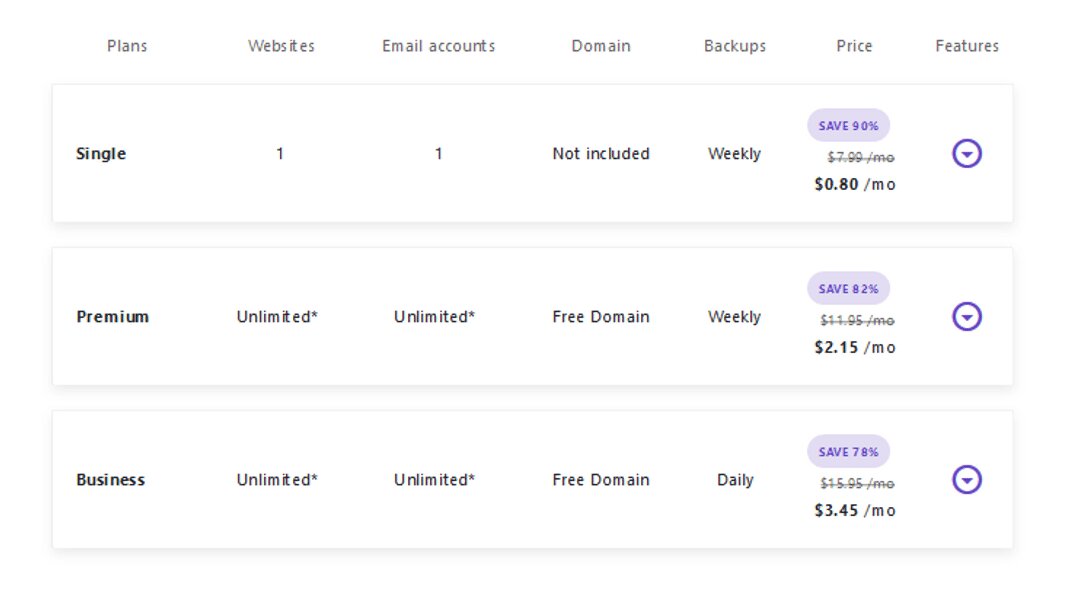
If you’re willing to shell out a little more ($2.89 per month), you’ll also get a free domain name to go along with your hosting. In addition, higher-tier plans offer free backups and enable you to build unlimited websites on your account.
All in all, Hostinger is a very affordable option. This is especially true when you consider its server speeds. For newbies, this is a great place to start, and you can always look at upgrading your plan as your site grows.
Overall pros and cons
To wrap up our Hostinger review, let’s quickly summarize its pros and cons. After all, it’s important to consider the whole picture before committing to a web host.
Pros
- Free domain name and one-click WordPress installation
- Affordable shared hosting plans
- Good performance results for the US and the UK in particular
- Publicly-displayed server status
Cons
- Moderate response times for support
- Modest performance results for locations outside of the US and UK
- Uptime is a little unreliable
Conclusion
Overall, Hostinger is a strong choice for both experienced WordPress developers and newbies. It offers fast speeds and knowledgeable customer support. However, while its performance is solid overall, you may experience performance blips now and again on heavy-traffic sites.

